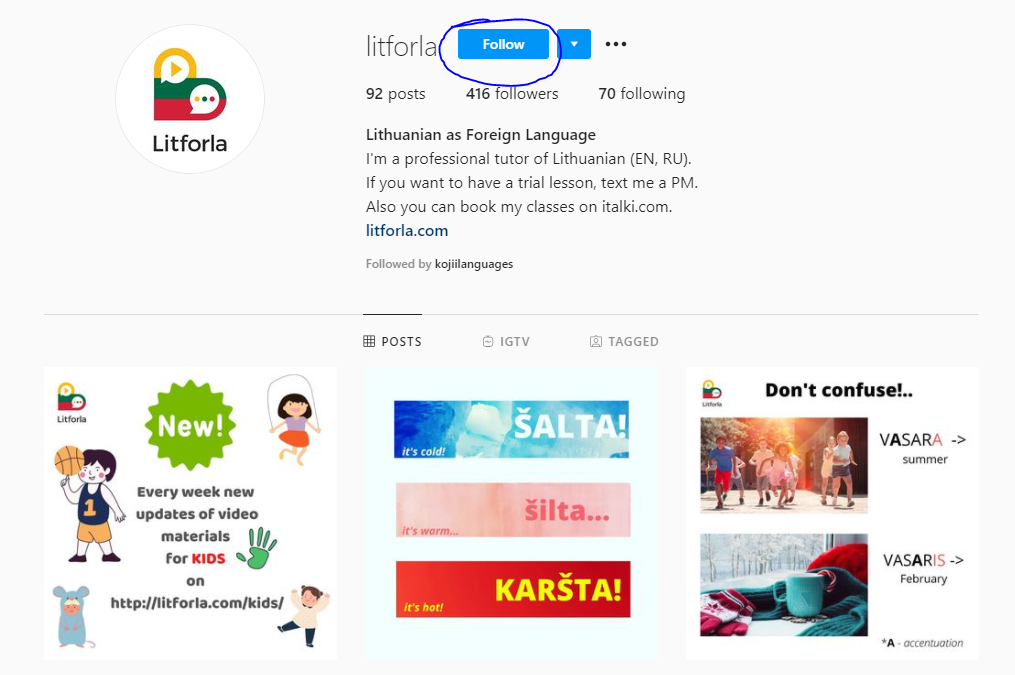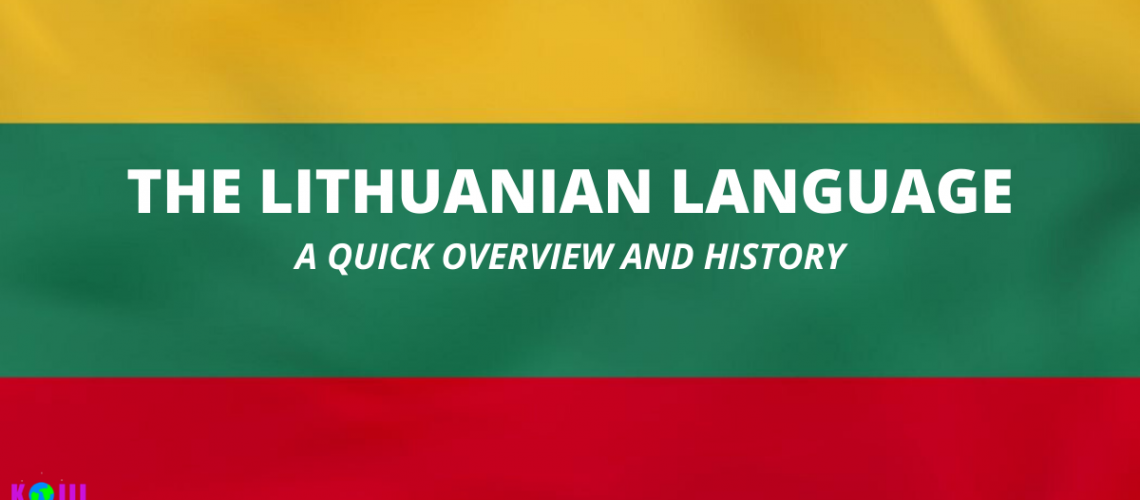A Brief Summary of the Lithuanian Language
Lithuanian is a very unique language. Yeah we’ve said that about languages like Yiddish and Hebrew, but really it is a unique language due to the completely different language structure it retains compared to its neighbors.Written in the Latin alphabet, Lithuanian is an Eastern Baltic language which is a descendant from the Balto-Slavic language family, which is ultimately a descendant of the Indo-European family.
Currently, there are about 3,000,0000 people who speak the language, with the majority living in Lithuania (duh).
It’s closest living relative is Latvian. Although it has had a few relatives who’ve passed away years ago. This includes languages like Selonian (Eastern Baltic), Old Semigallian (Eastern Baltic), Sudovian (Western Baltic), Old Prussian (Western Baltic), and a few more.
Looking to Learn Lithuanian?
Check out our article on the 5 Best Lithuanian Books that learners must have in 2021!
A Quick History of the Lithuanian People and Territory
The first record of Lithuania as a territory came from a book called The Annals of Quedlinburg in 1009 A.D. The book depicts a Christian missionary attempting to baptize a Lithuanian king, but instead, the king refuses and kills Bruno, an archbishop, in a land called Lituae.
If we take it back further (thousands of years ago), the Lithuanians can be generally described as a homogeneous group of people. They were a tribe of a larger group called the Balts. Fast forward to around 800-1000 A.D. and the Lithuanians, along with other Balts, were subject to Viking rulership and had to pay tribute to Denmark. Around a hundred years later the Lithuanians were invading other neighboring Balts and eventually became a dominant force by around the 12th century A.D.
The Grand Duchy of Lithuania
Shortly after, the small state adopted an official government body called The Grand Duchy of Lithuania (~1200 A.D. – 1569 A.D).
The Lithuanians were Pagans (non-Christian) and between the late 13th and early 15th centuries, The Grand Duchy of Lithuania was subject to crusades by the Teutonic Order. Eventually the Lithuanians and Poles defeated the Teutonic Order at the Battle of Tannenberg (1410 A.D.)
A hundred years later in 1569 the Lithuanians and Poles created the Polish-Lithuanian Commonwealth. Through this, one can argue that a lot of Slavic words bled into Lithuanian vernacular. Words in Lithuanian that are of slavic origin can be more closely related to Polish than Russian, one could say. By the way, just to give you an idea of how important the relationship between the two territories is, the first dictionary was published by Konstantinas Sirvydas and was between Lithuanian-Polish-Latin in 1609.
Linguistic History of Lithuanian
Why is this important? Well when it comes to language, written history is critical in understanding its development and structure. There is no written evidence of the Lithuanian language prior to a Catechism published in 1547 by Martynas Mažvydas. This makes learning about the language quite difficult, but luckily we have some clues.
Researchers believe that Lithuanian and it’s cousin Latvian, were once dialects of the same language. However, as Lithuanian became more dominant in the Baltic region, they slowly split into different languages.
Russian Rule (1795-1918)
Now, one facet of the history I completely looked over was the partitioning of the commonwealth between Prussia and Russia. Prussia took most of Poland, and Russia took most of mainland Lithuania.
In order to prevent Lithuanian nationalism, the Russia government banned all books, schools, and communities from using their native language. This also explains why Lithuanian adopted a fair amount of Slavic vocabulary.
During this time books were smuggled throughout the country, and many authors went underground to ensure the continuation of their language.
The Language Itself
The Lithuanian language is quite unique, as it’s very different from most languages and even Latvian isn’t that similar to the language.
Because Lithuanian utilizes the case system, word order isn’t quite important. What is the case system? Simply put, you make modifications or inflections to the stem of a noun, adjective, or other linguistic elements to determine the role it plays in the sentence.
Let’s take the sentence “I went to the store”
Let’s suppose X is an inflection that indicates the noun is the subject of the sentence, and Y is an inflection that indicates the noun is the direct object of the sentence.
Instead of saying “I went to the store” you could say “IX went storeY” “storeY IX went” “IX storeY went” etc. the word order doesn’t really matter due to the inflection indicating the role each noun plays. It’s a difficult concept to explain to those unfamiliar with the case system, if you have a better explanation please leave a comment!
The Cases in Lithuanian
There are 8 cases in Lithuanian, so yeah… not super easy if this is your first language with the case system. But let’s break it down a little. We won’t go into detail on nouns or phrases in Lithuanian, but rather how their cases work. Keep in mind these aren’t 100% how they’re used in English since we don’t utilize all the cases.
- Nominative – indicates the subject of the sentence (“I” went to the store)
- Genitive – indicates the possessor of an object (slightly different than possessive) (“Kojii‘s” language series is the best)
- Dative – indicates the indirect object of a verb. (We give “our readers” the best language content)
- Accusative – indicates the direct object of a verb. (We give our readers “the best language content“)
- Instrumental – indicates the tool used in the sentence. (We provide amazing language content with Word Press)
- Locative – indicates the location of the noun. (Lithuanian is spoken “in Lithuania“)
- Vocative – indicates a direct dialogue (You can’t escape our language content, Michael)
- Illative – indicates motion/movement into something. (I went “into my room” to find my keys)
Getting Started With Lithuanian
If you’re looking to get started with the language, you may find the following resources helpful:
- Colloquial Lithuanian (highly recommend this series)
- Teach Yourself Lithuanian (2006 edition)
- Pimsleur Lithuanian (10 lessons)
- Lithuanian: A Comprehensive Grammar
Follow @litforla on Instagram
Looking for a professional Lithuanian tutor? Consider reaching out to @litforla on Instagram! With a growing catalog of free posts, as well as paid tutoring service, you can be sure to excel your Lithuanian learning.

Interested in Other Languages?
If you’re looking to learn more about other languages and learning techniques you may be interested in the following links:
- How Hard is Modern Hebrew
- How to Learn and Speak Yiddish
- How to Wish a Happy Birthday in Yiddish
- How and Why Does Spaced Repetition Work so Well
